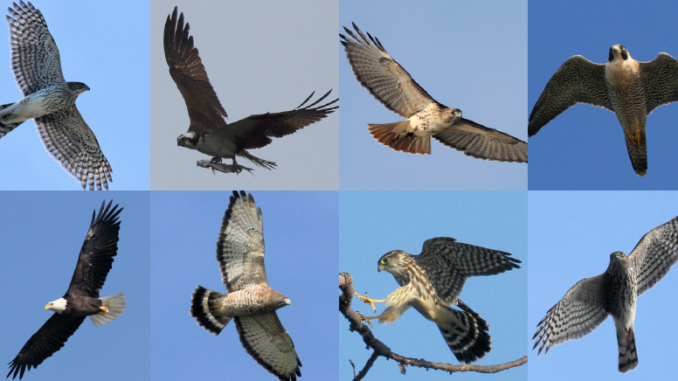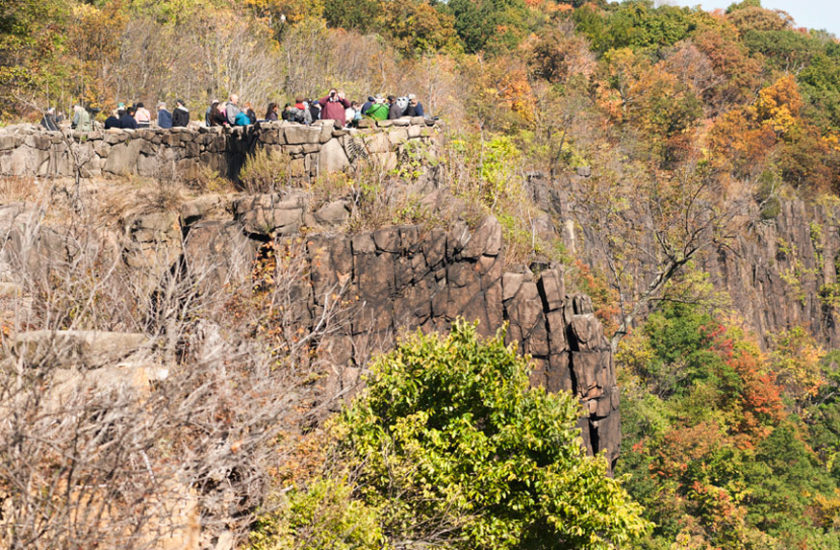
PALISADES INTERSTATE PARK, N.J.—As summer approaches fall, a new season emerges atop the New Jersey section of the Palisades Interstate Park: Hawk watching season.
“Each autumn, the Eastern Seaboard plays host to one of nature’s more spectacular pageants, as the largest migration of land-based predators on Earth occurs overhead. The migration of diurnal raptors—birds of prey that hunt and fly by daylight—takes these magnificent animals to their winter hunting grounds, some as distant as Central and South America—a journey that occurs unseen by most of us below,” the Palisades Interstate Park writes in its Hawks Over the Hudson literature.
“State Line Hawk Watch, founded in 1997, is one of several New Jersey hawk watches where volunteers observe raptor migration, providing their data to the Hawk Migration Association of North America, which compiles it for scientific use,” the park commission literature states.
From September through early November, volunteer observers record the migration of raptors at State Line Lookout, from 9 a.m. to 4 p.m. (volunteer availability and weather conditions permitting), the park commission says. Visitors are always welcome at the hawk watch, but binoculars are recommended.
The park commission is hosting a meeting to kick off the hawk-watching season on Sunday, August 25 from 11 a.m. to noon.

This will be “an informal meeting for those interested in participating in the fall hawk watch at State Line Lookout,” the park commission writes.
The meeting is open to all, regardless of birding experience. The group will meet at the Lookout Inn refreshment stand. For more information, call (201) 768-1360 ext. 108.
“The 14 species of hawks and two species of vultures that occur regularly in New Jersey can be seen [at the Palisades cliffs over the Hudson River] each fall,” the commission states. “Most are migrants that nest and rear their young in New England and Canada, while several species, such as the red-tailed hawk, can be seen year-round in the park.”
The State Line Hawk Watch was founded in 1997 and is one of about 12 official New Jersey hawk watch sites.
Peak migration will usually occur near the middle of the time frame—late August through November—but smaller numbers of each species may occur before or after the peak.
Some species to be on the lookout for, and their peak migration periods, include:
• Osprey, late August through early October;
• Bald eagle, late August through September, then late October through mid-November;
• Golden eagle, late October through mid-November;
• Sharp-shinned hawk, September through October;
• Cooper’s hawk, late September through October;
• Northern goshawk, October through November;
• Broad-winged hawk, September (most in mid-month);
• Red-shouldered hawk, October through mid-November;
• Red-tailed hawk, October through November;
• Rough-legged hawk, rare sightings in November and later;
• American kestrel, late August through early October;
• Merlin, mid-September through mid-October;
• Peregrine falcon, mid-September through October;
• Turkey vulture, mid-October through November.
Also throughout the season, look for Northern harriers or black vultures.
“Weather is a major factor in producing heavy flights: in general, the first or second day after a cold front, with winds out of the north, will bring the greatest number of birds,” the park commission states.
